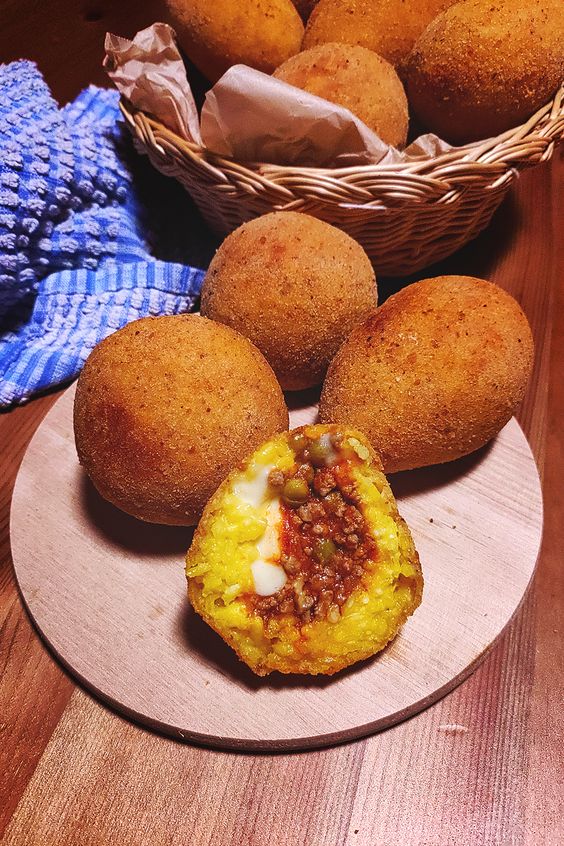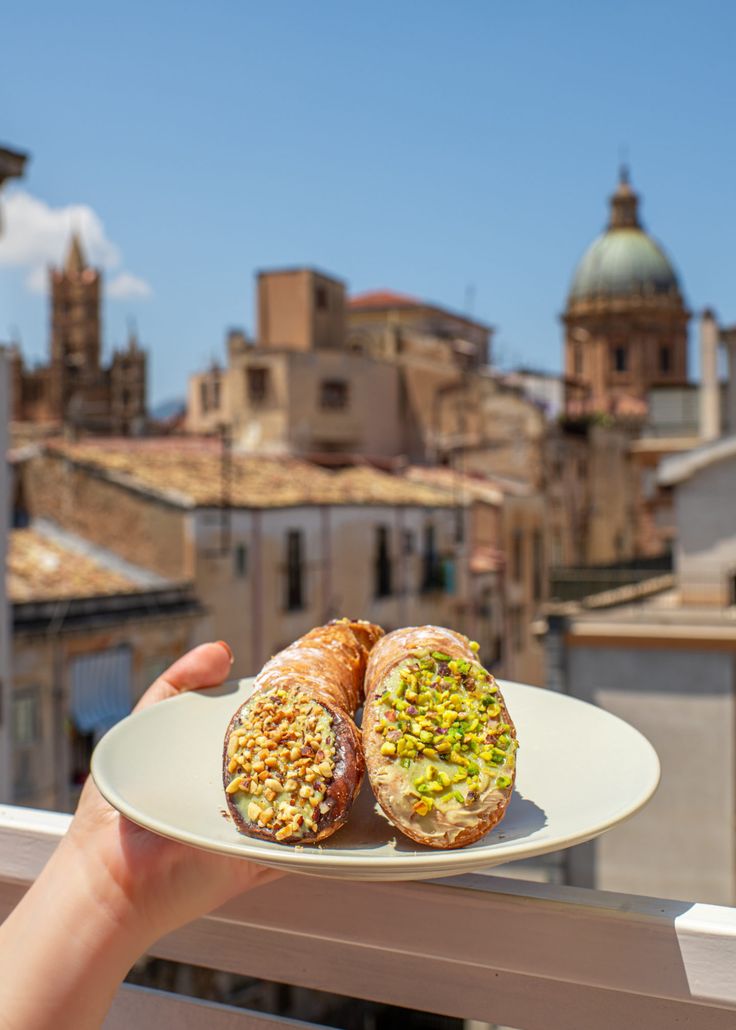Eating through Sicily

What to eat on your next Sicilian trip from Cannoli to Panelle.
Eating through Sicily
By Gabriela R. Proietti
February 19, 2024
Italy's biggest island, Sicily, has a rich and diverse cuisine, much like its geography and culture. Situated at the crossroads of the Mediterranean, Sicily has been shaped by centuries of foreign rule and trade, resulting in a unique blend of flavors, ingredients, and cooking techniques, making it a culinary destination from professional chefs and kitchen connoisseurs to curious foodies and cultural junkies.
Read on and discover some of Sicily's most prized desserts, dishes, street food, and treats.

Granita & Brioche
The further south you go in Italy, the sweeter the breakfast becomes, and the Sicilians have mastered the art of dessert for breakfast. Sicilian granita can be traced to the Arab influence during the Middle Ages; not much has changed since then. This frozen dessert is made from sugar, water, and various flavorings like fruits, nuts, and herbs. It has a texture unlike gelato or shaved ice, and some of its more popular flavors include lemon, pistachio, and almond. Granita is often served with a dollop of whipped cream or alongside a sweet pastry like brioche for an early morning treat.


Arancine
Not to be confused with Rome’s supplì, arancine may be the most recognizable Sicilian street food. These golden, crispy, and mounded rice balls are filled with savory ingredients, from ragù, cheese, and peas to ham and mozzarella, then quickly fried. Across the island, expect to find a variety of shapes and flavors depending on the city, but our love for all arrancine remains the same.


Cannoli
Sicilian cannoli are one of the most iconic and beloved desserts in Sicilian cuisine. These delicious pastries consist of crispy, fried pastry shells (cannoli shells) filled with a sweet and creamy ricotta-based filling. The filling for Sicilian cannoli is typically made with fresh ricotta cheese, powdered sugar, and sometimes vanilla extract or citrus zest for flavor. The ricotta mixture is whipped until smooth and creamy before being piped into the cooled cannoli shells.
Once filled, Sicilian cannoli are often garnished with chopped pistachios, candied citrus peel, or chocolate chips. They are usually filled and served fresh, as the crispy shells can become soggy if filled too far in advance.


Pasta alla Norma
Sicilian food doesn’t end at desserts and quick bites; there is an entire world of decadent dishes and main courses that await our taste buds. Pasta alla Norma is hands down a classic if you don’t know where to begin. Originating in Catania, this dish is a celebration of Sicilian flavors, including pasta tossed with tomato sauce, fried eggplant, grated ricotta cheese, and fresh basil. The key to this dish is selecting quality ingredients, so make sure to do your research before sitting down at any ordinary trattoria.

Panelle
Panelle is another traditional Sicilian dish, particularly popular in Palermo. These thin, crispy chickpea fritters are often served as a quick street food snack or appetizer and are typically enjoyed hot and crispy, either alone or in a sandwich. One popular way to eat panelle is in a "pane e panelle" sandwich, where the chickpea fritters are sandwiched between two slices of soft bread, often with a squeeze of lemon juice or a sprinkle of salt, leaving you full and delighted.


Cassata
In the land of ricotta, cassata takes the crown. This traditional cake-like dessert is rich, creamy, and beautifully decorated and colored, not to mention. It consists of sponge cake soaked in liqueur or fruit juice, layered with sweetened ricotta cheese, and often studded with candied fruits, chocolate, and nuts. The dessert is then covered with a layer of marzipan or icing and sometimes adorned with intricate decorations or additional candied fruits. Cassata is typically bought and served for special occasions, including Christmas, Easter, birthdays, and Sunday lunch.

Sfincione
Sicily's version of pizza is much different than a thick-crusted Neapolitan pie and thin and crunchy Roman pizza by the slice. Originating from Palermo, sfincione features a thick and spongy crust topped with a tomato-based sauce that is slightly sweetened and seasoned with onions, anchovies, and oregano. Unlike traditional pizza, sfincione doesn't typically include cheese, although some variations may include a sprinkling of grated caciocavallo or pecorino cheese. Sfincione is often baked in a rectangular or square pan, resulting in a thick, hearty pizza perfect for sharing.

Paste di Mandorle
Like ricotta and pistachios, almonds are another abundant crop that grows throughout the island. Paste di Mandorle almond cookies are made by combining simple ingredients, including almonds, sugar, and egg whites, creating a delicious treat that is soft, chewy, and rich in almond flavor. Often dusted with powdered sugar after baking and cooling, these simple cookies are often served alongside an afternoon espresso or after dinner with dessert wines.

Pasta al Pistacchio
One of my favorite sweet flavors to reach for is pistachio, from gelato to flavored cream in my morning cornetto. But what about a savory twist on this beloved nut? Sicily is renowned for its high-quality pistachios, considered some of the best in the world, so incorporating this nut into recipes doesn’t stop at desserts. Pasta with pistachio sauce is a delightful and flavorful dish from Sicily. This dish typically features a creamy and rich sauce made with ground pistachios, creating a luxurious and nutty flavor profile. The sauce is usually seasoned with salt, pepper, lemon juice, or zest to brighten the flavors and add a tropical touch.





